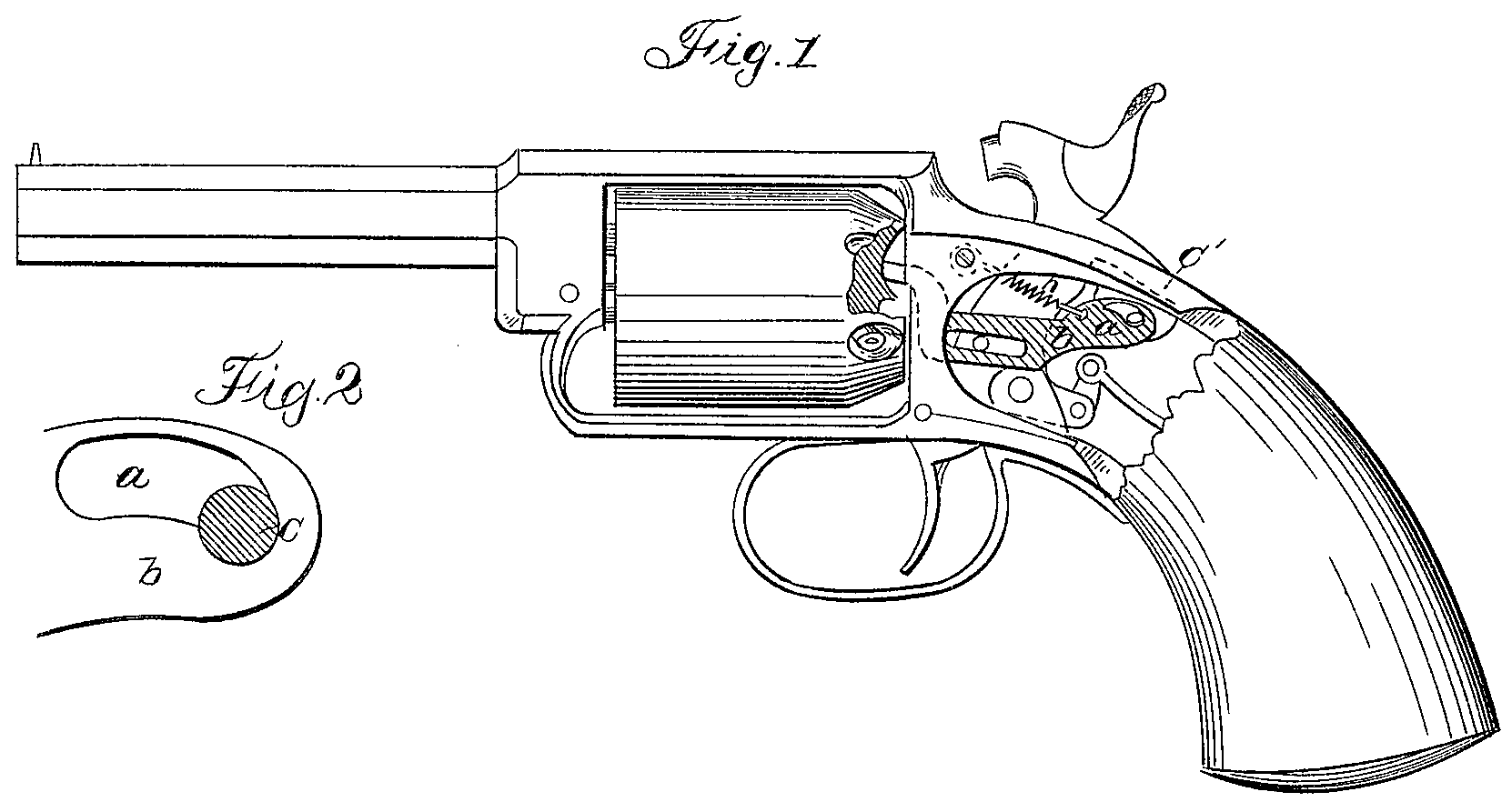US 17904
UNITED STATES PATENT OFFICE.
JAMES WARNER, OF SPRING FIELD, MASSACHUSETTS,
IMPROVEMENT IN REVOLVING FIRE-ARMS.
Specification forming part of Letters Patent No. 17,904, dated July 28, 1857.
To all whom it may concern:
Be it known that I, James Warner, of Springfield, county of Hampden, and State of Massachusetts, have invented a certain new and useful Improvement in Revolving Fire-Arms; and I do hereby declare that the following is a full, clear, and exact description of the same, reference being made to the annexed drawings, making a part of this specification, in which—
Figure I is a side elevation, partly in section. Fig. II is of a part in detail.
Similar letters indicate similar parts in both the figures.
My improvement is applicable only to those repeating fire-arms wherein the revolution of the charge-cylinder is effected by the point of a lever which projects through the shield-plate, taking into a series of ratchet-grooves on the rear end of the cylinder, and which lever is required to retreat, as a latch, in a somewhat horizontal direction in order to take a new hold for the next rotative movement. As usually constructed this act of retreating is permitted by having a slot instead of a circular hole for that pin to act in which confines the reverse end of the lever, and thus the lever may have the necessary longitudinal movement. A coiled spring is so affixed that it will draw the point of the lever toward the cylinder, and this arrangement effects the purpose very well when the parts are new and clean; but when from the piece being fouled after repeated firing the rotation is rendered more difficult the point of the lever is apt, particularly when it has become slightly worn, to slip out or be unlatched in the act of cocking, and since the rotation is effected by the cocking the piece will not then be discharged for the reason that the rotation will have been but a partial one. To keep the lever forward under these circumstances some device is required which shall be more positive in its action than the spring alone. For the purpose merely of giving a rotation with certainty all that is necessary would be that the lever should have freedom simply to turn upon the pin at the back end, the sliding motion along it being essential only when the lever is returned in the act of firing, in order that it may ride over the edge of the next groove below to take a new hold. My construction is such that the lever will be held firmly in the advanced position— that is, the centering-pin being then in the back end of the slot— during all the time that a rotation is being effected by the said lever, and will be free to slide along the pin when in the act of passing to the next groove. I effect this by cutting away the back end of the slot a in the lever b, so as to form a depression which will receive into it about one-half of the pin c, confining that end, and as shown clearly in the enlarged view, Fig. II.
The operation will be that as the piece is being fired the pin i, which extends, as seen in Fig. I, from the hammer into a slot in the lever b, carries that point of the lever downward which is in contact with the cylinder, and in so doing will also have a tendency to depress the reverse end, and therefore the pin will then have a bearing against the upper side of the curved slot, and the lever can readily take the backward movement necessary to allow it to pass into the next catch in the cylinder, as in Fig. I it is represented as about to. On cocking again the pin i acts to lift both ends of the lever b, and the coiled spring having again drawn the lever forward the pin c will now rest in the depression. The bearing of the lever up against it is sufficient to keep the lever from slipping off, and hence the point cannot retreat to escape from the catch in which it is engaged, thus insuring the accurate revolving of the cylinder to the full extent required.
I claim—
The specific device in the end of the slot for preventing the retreat of the lever b in the act of cocking, substantially as set forth herein.
JAMES WARNER.
Witnesses:
S. H. Maynard,
Thomas Ducey.

